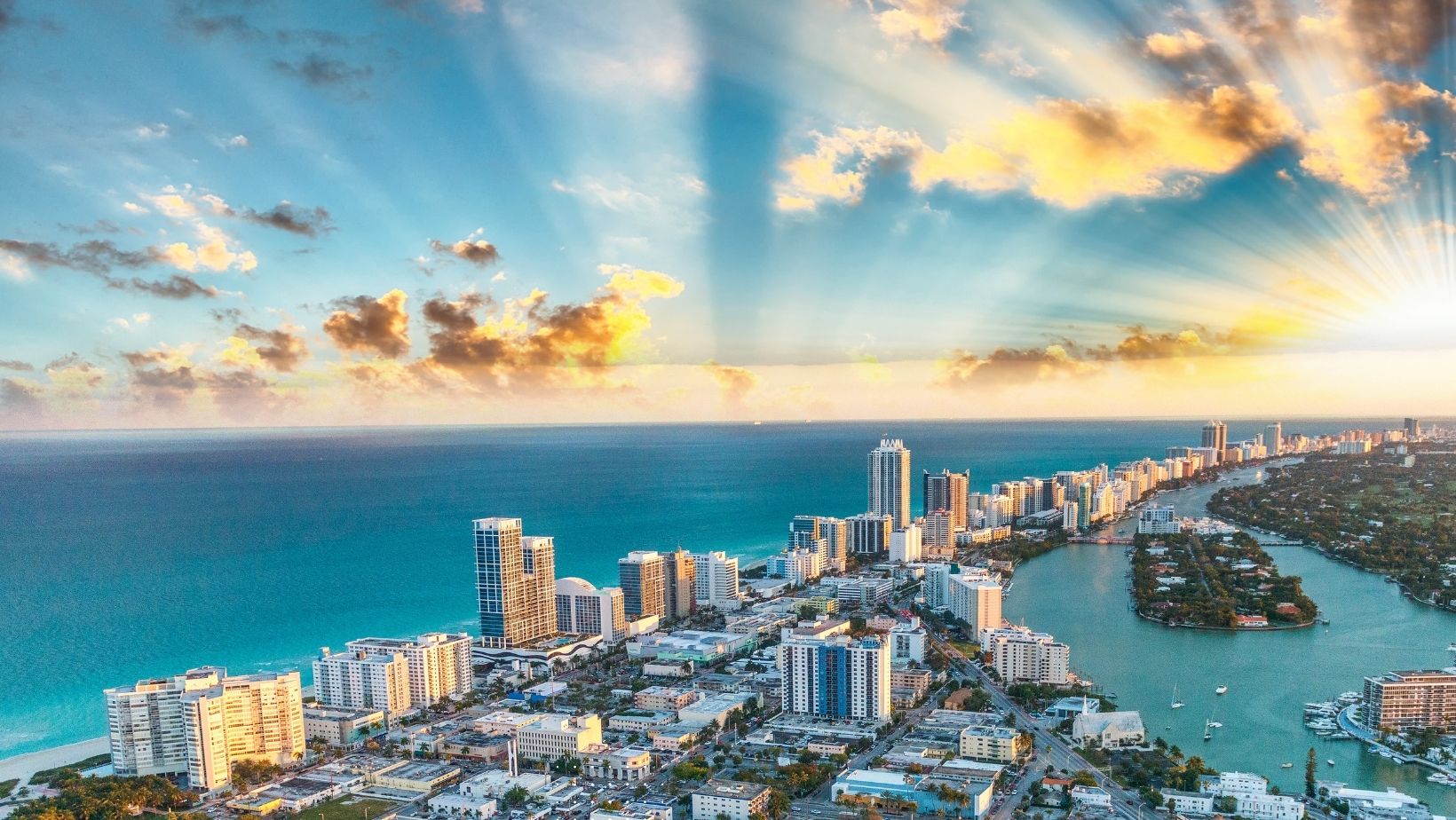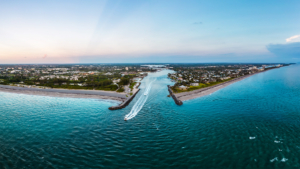Florida Housing Market Reaches Unprecedented Inventory Levels in 2025
Record-Breaking Housing Supply Creates New Market Dynamics
The Sunshine State is experiencing an unprecedented shift in its real estate landscape as housing inventory reached a historic peak in January 2025. With 172,209 homes available for sale—representing a dramatic 22.7% increase year-over-year—Florida's housing market has entered uncharted territory since record-keeping began in 2012.
This remarkable surge in housing supply stems from a perfect storm of market conditions: aggressive new construction outpacing most other states, increasingly severe natural disasters driving insurance costs to prohibitive levels, and a noticeable decline in buyer demand with pending sales dropping 9.3% compared to January 2024.
For prospective buyers, this creates a landscape of opportunity unlike anything seen in recent Florida history. For sellers, however, the changing market dynamics present significant challenges that require strategic adaptation.
Coastal Communities Leading the Inventory Surge
The inventory boom isn't distributed evenly across the state, with coastal communities experiencing the most dramatic increases. Active listings—which measure the total homes available throughout the month—climbed 19.4% year-over-year to 212,437 properties, approaching the all-time high established in 2019.
Eight metropolitan areas have shattered their previous records for active listings:
- Cape Coral (24.8% increase)
- Deltona-Daytona Beach (17.9% increase)
- Homosassa Springs (25.8% increase)
- Lakeland (19.7% increase)
- North Port-Sarasota (14.6% increase)
- Ocala (17.8% increase)
- Port St. Lucie (24.5% increase)
- The Villages (26.6% increase)
Notably, five of these eight record-breaking markets are coastal communities, where homeowners face significantly elevated risks from natural disasters alongside escalating insurance premiums and homeowners association fees.
Other markets showing substantial inventory growth include Fort Lauderdale (27.2%), Naples (28.6%), and Miami (23.4%), though these haven't yet reached record levels. Meanwhile, some inland communities like Sebring (4.5%), Tallahassee (3.7%), and Okeechobee (1.2%) are experiencing more modest increases.
The Condo Conundrum: Regulatory Changes Drive Seller Exodus
Florida's condominium market has become a major contributor to the inventory surge, with condo listings reaching an all-time high in January 2025. This trend coincides with recent regulatory changes designed to ensure structural integrity following high-profile building collapses in recent years.
These new regulations, while necessary for safety, have triggered substantial increases in homeowners association fees as buildings implement mandatory structural assessments, repairs, and reserve funding. Many condo owners, particularly those on fixed incomes, are finding these escalating costs unsustainable, prompting them to list their properties.
Single-family home inventory nearly matched record levels in January as well, creating unprecedented choice for buyers across all housing segments. The combination has transformed Florida into what Redfin agents are describing as a definitive "buyer's market," where sellers must compete aggressively for attention.
Climate Concerns Reshaping Market Fundamentals
The influence of climate change on Florida's housing market cannot be overstated. As hurricane frequency and intensity increase alongside rising sea levels, insurance companies have responded with dramatic premium hikes or by withdrawing coverage entirely from high-risk areas.
Many homeowners, faced with annual insurance premiums that can exceed $10,000 for modest properties in coastal zones, are reassessing their long-term commitment to Florida living. This reassessment contributes significantly to the current inventory surplus, particularly in vulnerable coastal communities.
The inventory surge also reflects a growing awareness among homeowners about the potential long-term impact of climate change on property values in flood-prone areas. For some, selling now represents a strategic decision before market conditions potentially deteriorate further.
What This Means for Buyers and Sellers in 2025
For buyers, Florida's record inventory creates unprecedented leverage and opportunity. With numerous options available, buyers can afford to be selective and aggressive in negotiations. Concessions, once rare in Florida's hot market, have become commonplace as sellers compete for attention.
"Bidding wars are very rare these days," notes Bryan Carnaggio, a Redfin Premier real estate agent in Jacksonville. "With this many houses for sale, a home basically needs to look like it's out of a magazine—and be priced fairly—to get multiple offers."
For sellers, the changed landscape demands a strategic approach focused on property presentation, competitive pricing, and realistic expectations. In some Florida markets, home prices have begun to decline as inventory continues to accumulate. Homes in immaculate condition with thoughtful upgrades and competitive pricing still attract buyer interest, while properties with deferred maintenance or ambitious pricing often languish on the market.
Market Insights: What Industry Experts Are Saying
Are home prices falling throughout Florida due to the inventory surge?
While some markets are experiencing price adjustments, the situation varies significantly by location and property type. Premium properties in desirable locations with minimal natural disaster risk continue to hold value, while properties in vulnerable areas or with deferred maintenance issues face more substantial pricing pressure.
How long will Florida remain a buyer's market?
Market analysts project the current inventory surplus could persist throughout 2025 and potentially into 2026, as the fundamental factors driving the trend—construction rates, climate concerns, and insurance costs—show no signs of immediate resolution. However, Florida's population growth remains strong, providing a counterbalance that should eventually absorb excess inventory.
Should homeowners in coastal areas sell now before conditions worsen?
This depends entirely on individual circumstances. Long-term homeowners with substantial equity and the financial capacity to absorb increasing insurance costs may choose to weather the current market conditions. For others, particularly those concerned about climate impacts or struggling with rising ownership costs, the current inventory situation represents a challenging but navigable selling environment.
How are builders responding to the inventory surplus?
New construction, which contributed significantly to the current inventory situation, has begun to slow in some markets as builders recognize the changing dynamics. However, Florida's population growth continues to drive housing demand, particularly in areas less susceptible to natural disasters and insurance premium spikes.
What areas of Florida are maintaining the strongest market conditions?
Inland communities with strong employment prospects, quality infrastructure, and reduced natural disaster risk continue to outperform coastal markets. Areas around Orlando, parts of the Interstate 4 corridor, and communities with diversified economic bases show greater resilience despite the overall inventory surge.
As Florida's housing market navigates these uncharted waters, both buyers and sellers must adapt to fundamentally changed conditions. For buyers, due diligence regarding insurance costs, flood risks, and homeowners association finances has never been more critical. For sellers, realistic expectations and strategic property presentation have become essential in an increasingly competitive marketplace.













